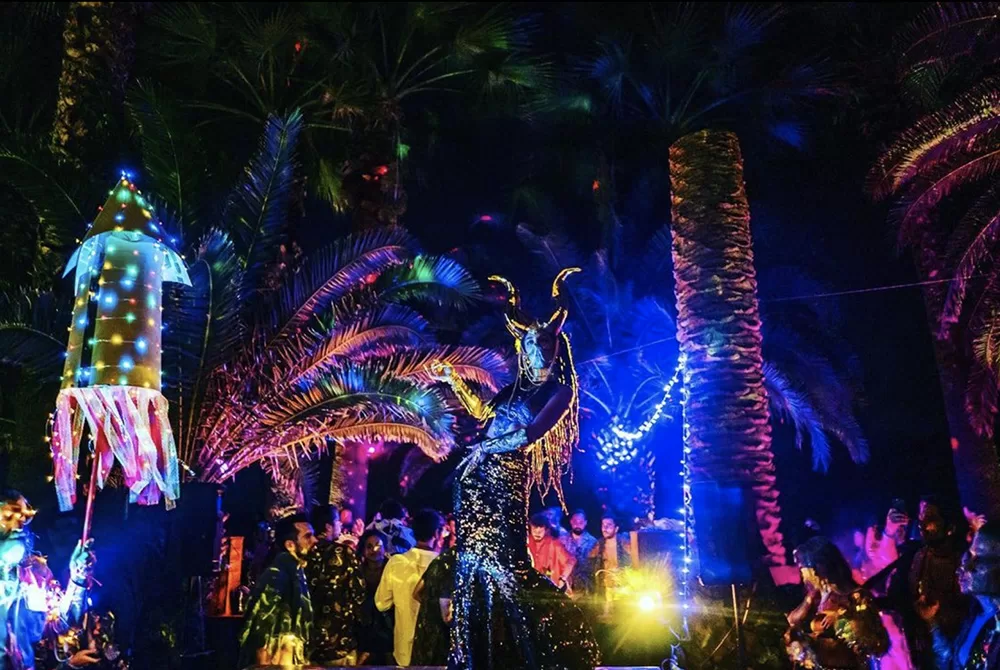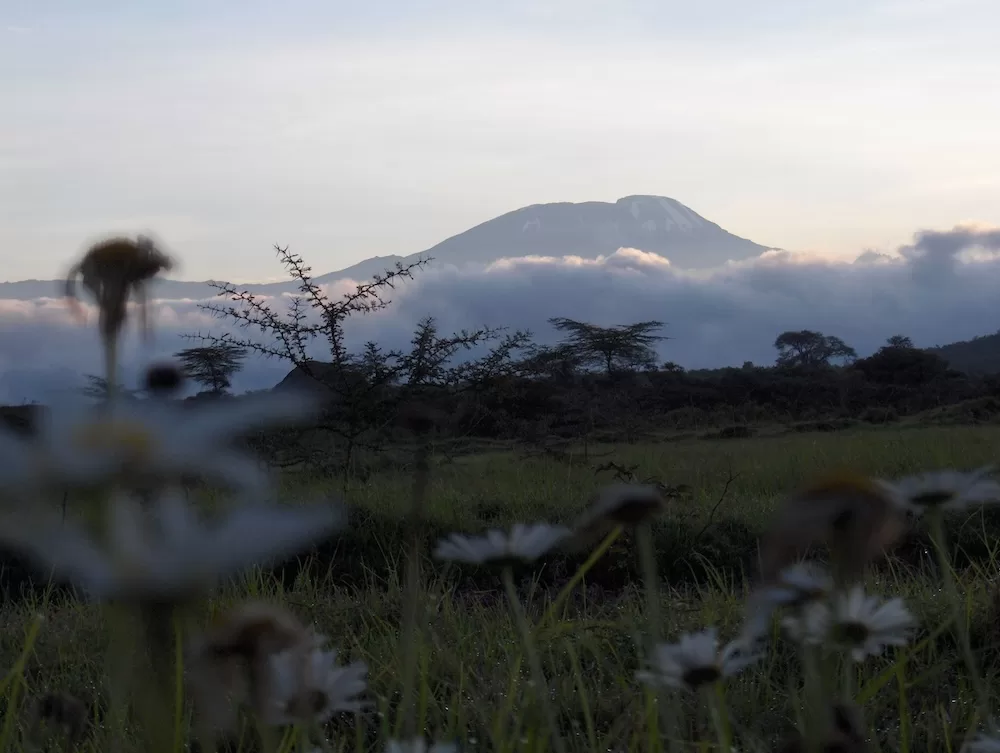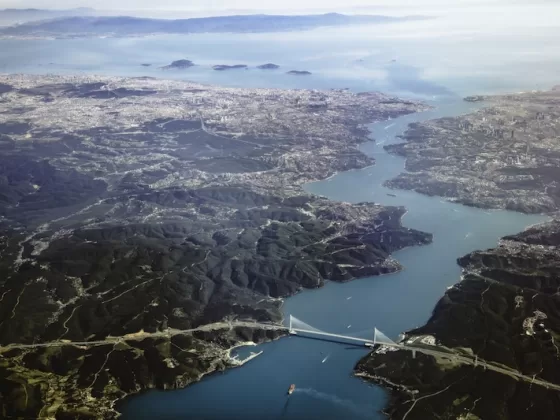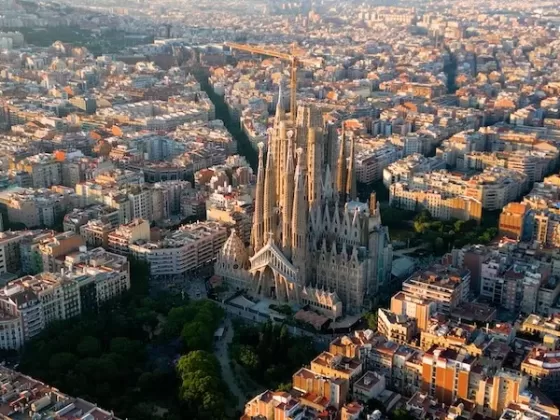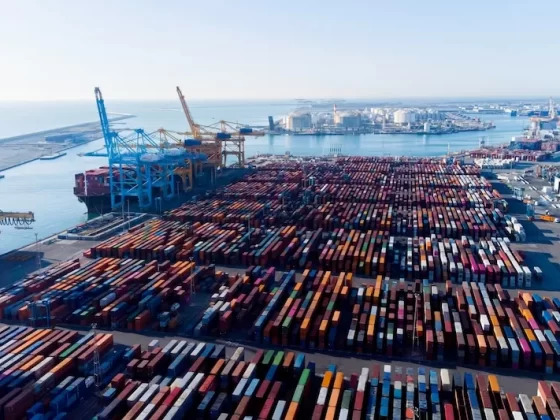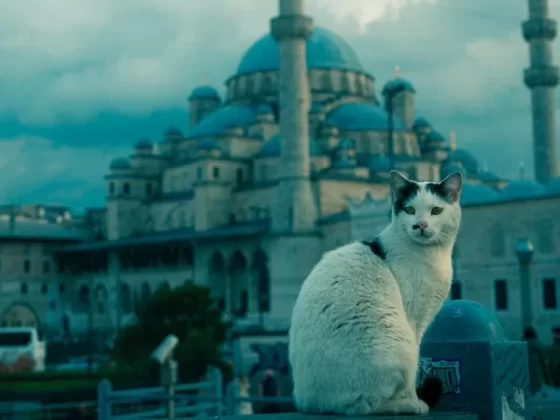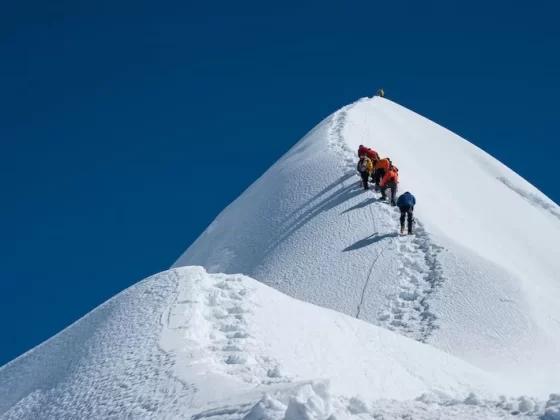They come every summer to this pristine bay on the southern coast of the Gulf of Gökova, in Turkey’s Muğla province, just north of the popular resort town of Marmaris.
Are they drawn by some super-natural force or energy vortex? Have they come to find a mate, or just to swim in the crystal-clear waters? Soon after they arrive, there’s a sudden noise, loud and ominous. A bass line thumps. A dark fin slices through the water.
The people are here to party, and the sharks are fleeing. Welcome to Boncuk Bay.
Turkey’s 1700-km Mediterranean coast is among the world’s most popular summer vacation destinations, and its more diverse marine environments. Of the country’s more than 56 million visitors last year, many made their way to beaches of the west and south, like countless Turkish nationals.
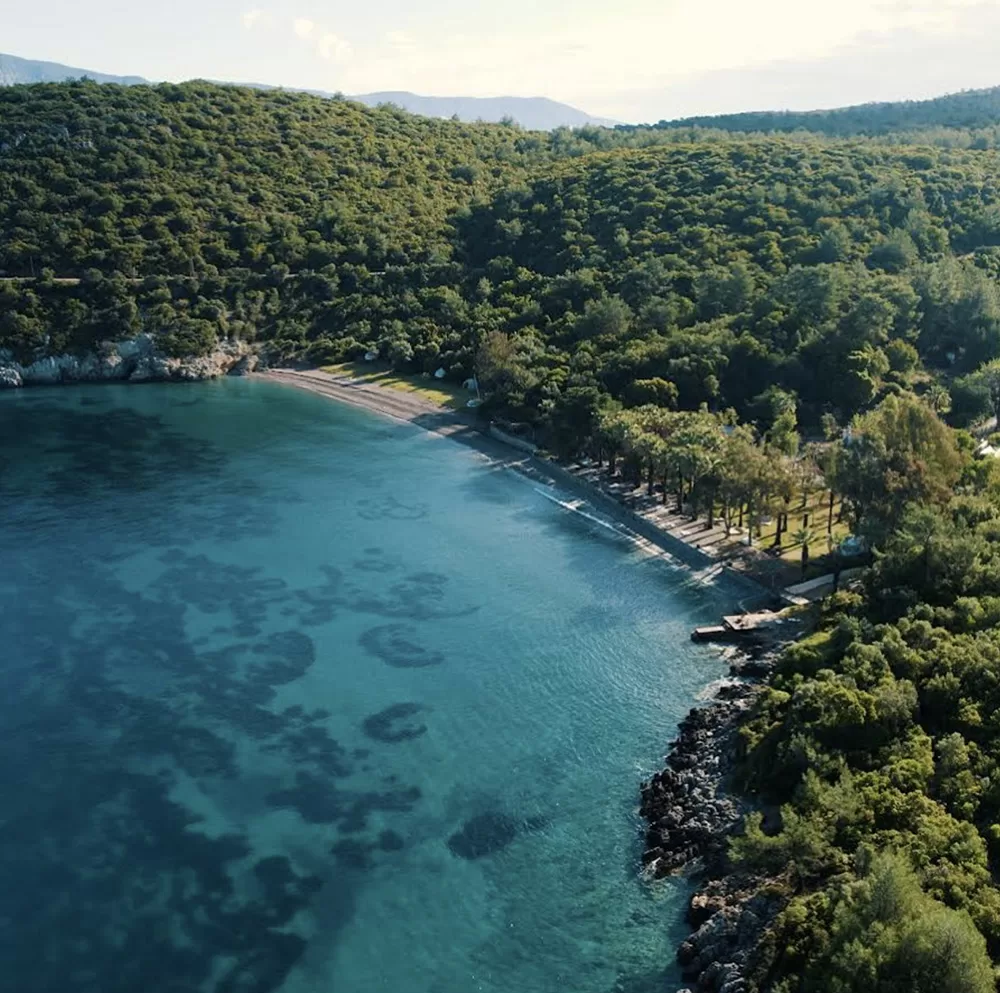
The most popular areas are Antalya, a lovely port city with ancient ruins surrounded by a string of resorts, and Bodrum, a western peninsula that has in recent years become increasingly high-end. Marmaris, too, has long been a favorite of Turkish vacationers and British holiday-makers. But very few venture north to quiet, unassuming Boncuk Bay, which may explain why sandbar sharks, many years ago, made it their mating grounds.
The sharks’ presence, in turn, soon helped draw the bay’s other inhabitants. “This is one of two places in the world where this kind of shark mates,” says Mehmet Mahruki, who opened his Bonjuk Bay resort—spelled with a “j” to help foreigners with their pronunciation—soon after coming upon the cove in 2014.
With their global numbers in decline for years, the sharks are labelled vulnerable on the International Union for Conservation of Nature’s Red List of Threatened Species. Boncuk Bay is one of 19 marine protected areas (MPAs) in the country, and to protect the sharks and other marine life, Turkey’s government declared the bay a no-fishing zone in 2010.
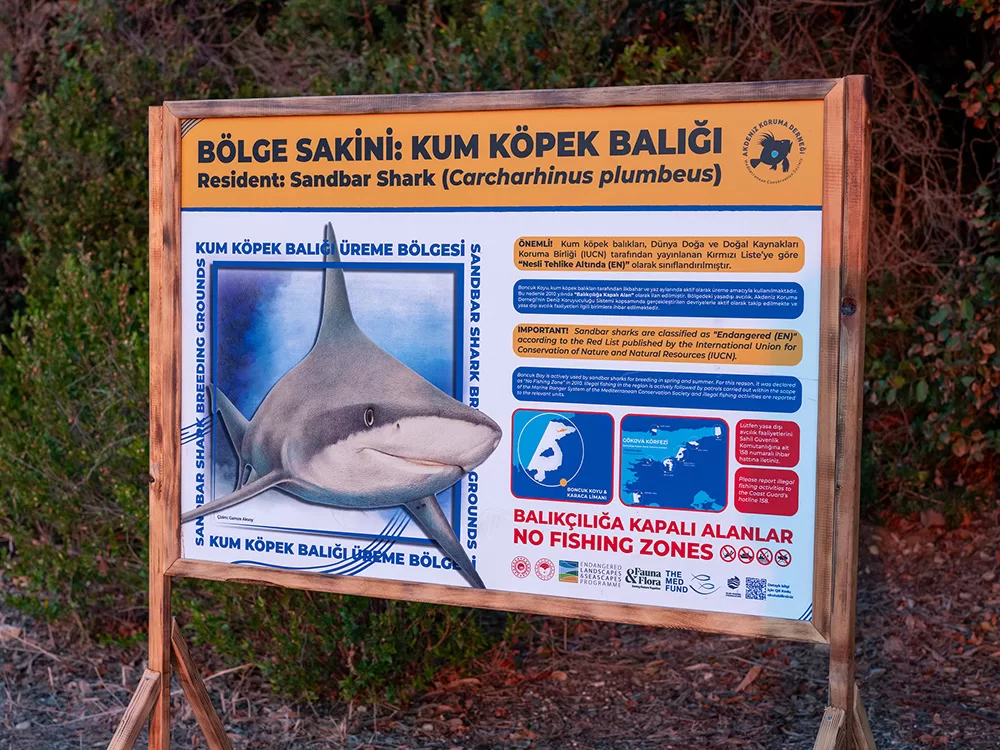
“I instantly felt there is a vortex here, there is very strong energy,” Mahruki explains. “There must be something in the water. Somehow this place has a strong energy that’s pulling those animals to specifically this bay, and I thought that was part of the magic.”
Inspired by his experiences at Burning Man, the annual Nevada desert celebration of eco-friendly freedom and revelry, Mahruki’s beach retreat of “barefoot luxury” stresses a leave-no-trace, hippy ethos and mostly attracts 20- and 30-something foreign bohemians interested in nude sunbathing, communing with nature, and all-hours dance parties.
The cove’s only consistent human presence, Bonjuk Bay accommodates up to 200 guests, with about half sleeping in their own tents. Weekly summer gatherings often include DJs, and the bass-heavy beats echo off the placid water as gaggles of hippy-chic Bonjukians dance.
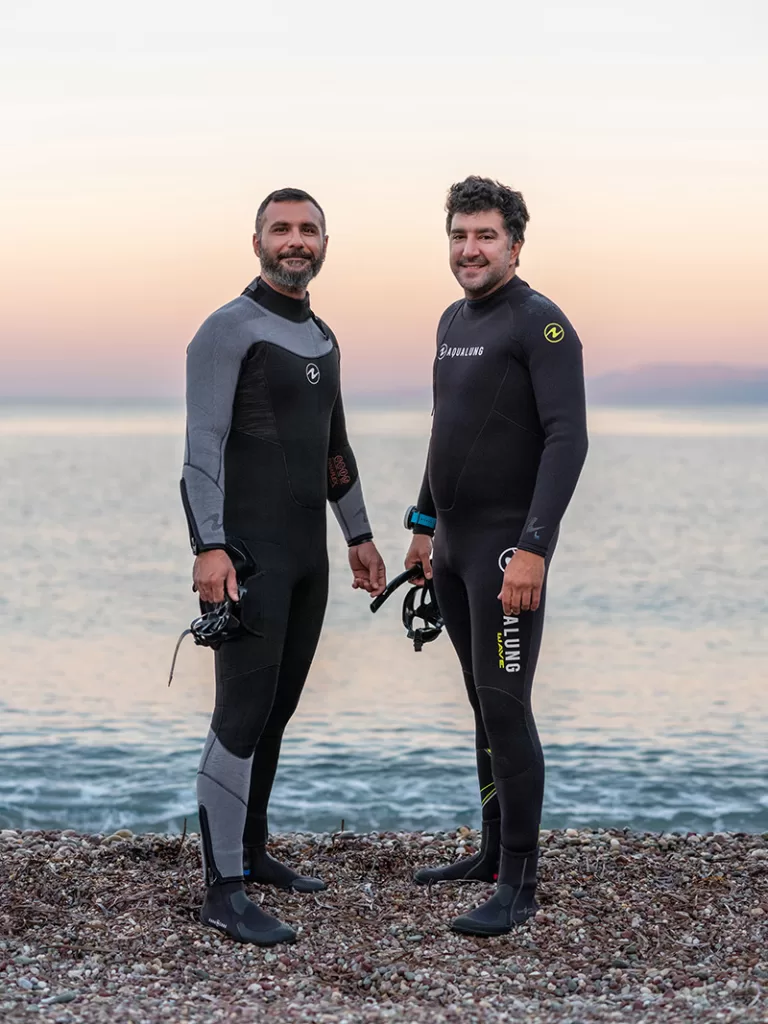
Tunca Olguner, a hydrobiologist with the Mediterranean Conservation Society (MCS), has spent years monitoring the sandbar sharks in Boncuk, long their most frequented spot in Turkey. He and his team go on dives in the warmer months to track their population.
Sandbar sharks are skittish, fleeing humans rather than attacking. Olguner has seen many times how even the relatively quiet underwater bubbles from divers’ breathing gear has spooked the sharks, causing them to bolt. He wonders how much the creatures might be rattled by Bonjuk Bay’s hours of booming beats.
“We don’t have evidence that when they turn on the music, the sharks go away. We don’t have that kind of data,” said Olguner. “But when we’re snorkeling, if our slight sound of the bubbles scares the sharks, well, think about the big parties.”
MCS scientists have placed underwater cameras throughout the cove to track the sandbar sharks. In one video from May 2023, a few swim up to and just past the camera, emerging from the dark waters like the killer Great White in Jaws. MCS rangers patrol the area every day, informing fishermen and other boaters that the area is protected and they have to leave.
As in many places around the world, warming weather is likely making an impact. Sandbar sharks’ ideal water temperature seems to be 23-26° C (76-82 F)—they tend to stay away if it’s hotter or colder than that. “Especially this year, we see that their occurrence comes early, because the sea temperature increased earlier than in past years,” said Olguner.
MCS scientists recall seeing sandbar sharks on their dives at Boncuk in previous years, but during this year’s unusually hot summer, they did not see a single shark. They still hope to see some in this summer’s video footage, which they’ll review later in the fall.
MCS’s fieldwork launches from a monitoring station on the north side of the cove, a few hundred meters up the beach from Bonjuk. One morning in late September, Olguner, Kerem Gökdağ, a marine biologist, and Osman Aydın, a ranger, moored their boat at the station and prepared for their shark monitoring dive.
Read More on The Madding Crowds of High-Season Travel
They strapped on their wet suits, flippers, GoPros, and goggles and took the plunge. They would see no sharks that day, despite an ideal water temperature of 25°C. Later that day, the MCS scientists brought their foreign visitor over to Bonjuk Bay.
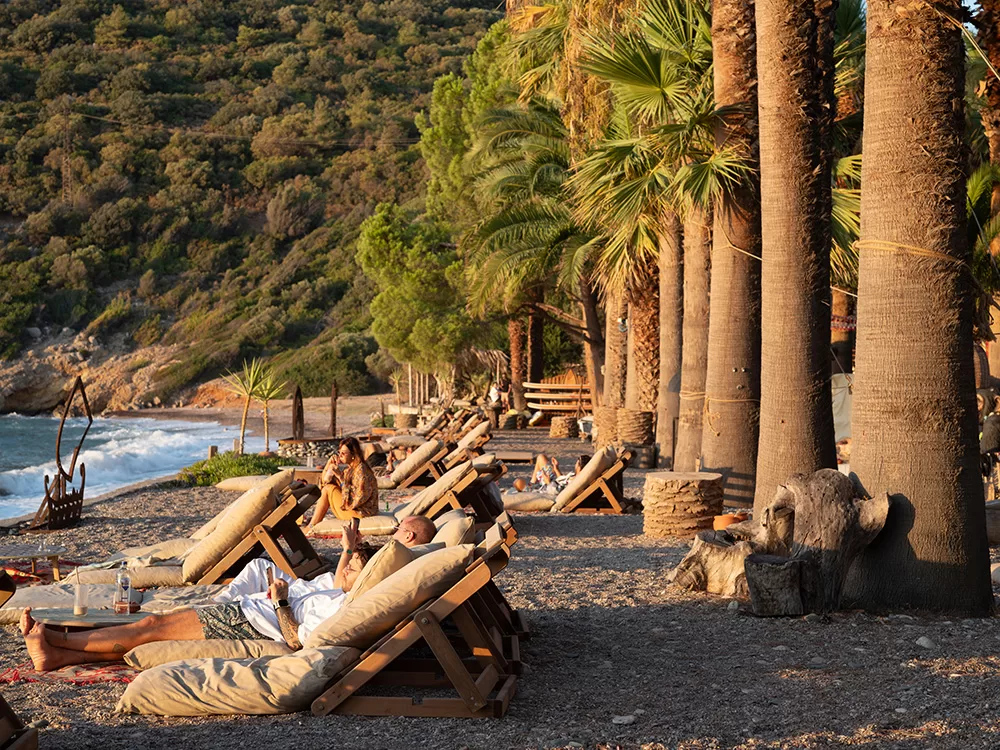
Fethi, a tall Turkish man with pink hair and a nipple piercing who has been working at Bonjuk for years, turned up to open the front gates. Strolling in revealed a scene of bohemian revelry at rest.
A tree swing, a trampoline, and a loveseat fashioned from a boat suspended in the air beckoned Bonjukians. Lavender juggling pins sat next to an outdoor couch facing the sea. Discarded sequined clothes were piled high beside a tent.
A bulletin board listed on-call healers. Reaching the beach, several recovering guests lounged and napped under palm trees as the waves crashed onshore. A young woman walked by in furry sandals and a leopard print sarong, followed by another in black lace pants and a thong bikini. Eda, the woman in lace, has been working at Bonjuk all summer.
She bubbles with enthusiasm when asked about life at the resort. “At the big events, everyone is hugging, kissing,” she says, reflecting on her summer. “I feel like I’m so much farther on my healing journey.”
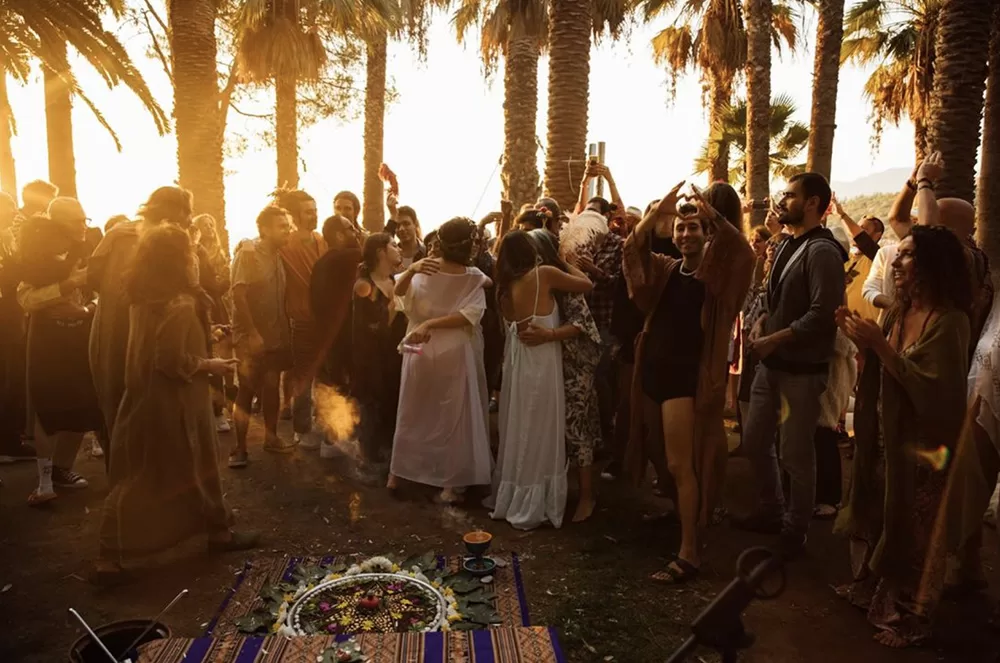
Various areas suit different moods. The “sacred forest” is for breath work, sound healing, and morning yoga. The “cave”—a shaded area of stone covered in modern hieroglyphs — is for cooling off. A purple door stands incongruously in the center of the resort grounds.
Bonjuk founder Mehmet Mahruki describes it as a portal, which is also, in a way, how he views his resort. He found the site by accident, passing through the area about a decade ago. “I followed this road that comes to Boncuk Bay without knowing that this place existed,” he said. “I turned the corner and saw this place from the top. That was a breathtaking moment for me, like love at first sight.”
To maintain that magic, the resort is deeply private. When Mahruki first opened Bonjuk Bay, locals from Marmaris and nearby villages turned out to protest, aghast at the de facto privatization of a treasured public beach. Though it can sometimes be hard to tell, all beaches are free and public in Turkey; it’s illegal to charge a fee to grant beach access.
Technically, Boncuk Bay beach is still open to the public. But it’s impossible to access without passing through the resort’s closed gate. Entry from the sea is also all but impossible due to the bay’s protected status, which bars fishing and diving, plus the lack of a proper boat dock at Bonjuk Bay.
Would-be guests cannot make a reservation on websites like booking.com. Rather, they are only able to make a request via Bonjuk’s website or social media. Most are only cleared to stay if they’re able to provide a reference from a previous guest or prove ownership of what Bonjuk deems is an appealing social media profile.
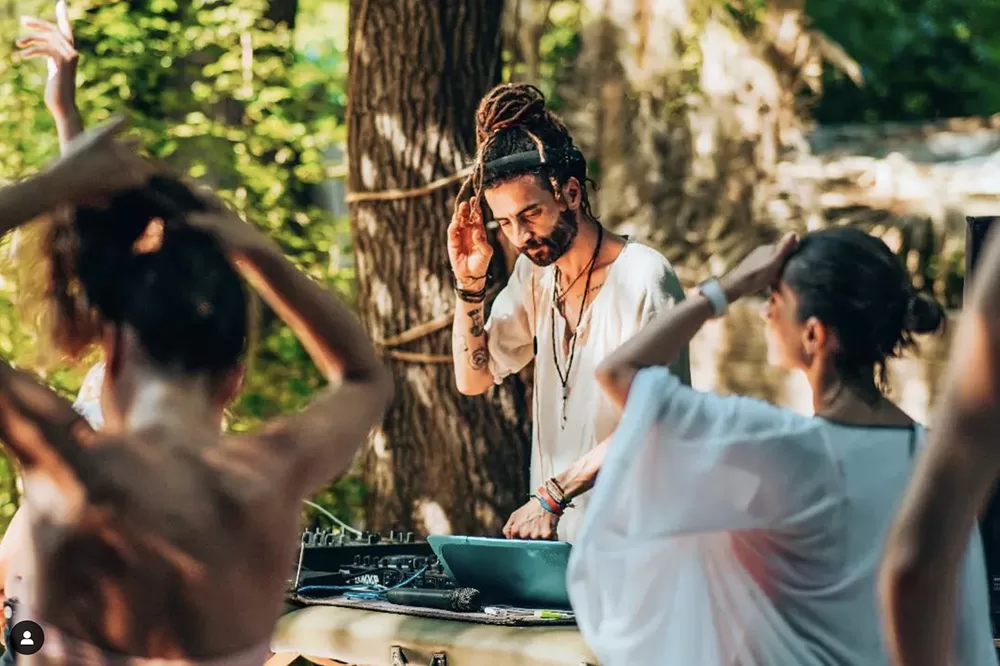
Bonjukians seem quite eco-conscious. Recycling baskets have been placed throughout the resort and the beach is much cleaner than many of Turkey’s truly public beaches, which are often marred by discarded beer bottles and plastic bags.
MCS posted a prominent sign in Bonjuk Bay explaining the presence of the sandbar sharks. They also distribute shark information to resort guests so they know what to expect when they venture out on Bonjuk’s complimentary paddle boards.
A visitor asked a repeat guest at Bonjuk about the local sharks. “In the Mediterranean, there aren’t any sharks because it’s too hot for them, I think,” says Hasan. He was told there were, in fact, sharks in Boncuk Bay. “I didn’t know that!”
It’s crucial that the Bonjukians know about the sharks and that they are endangered. “All around the world, because of the movie Jaws, people are afraid of sharks, they try to kill the sharks,” says Olguner. “But almost all sharks are in danger, because they’re a mostly critically endangered species, because their reproduction rates are so low.”
Overfishing throughout the world has endangered sandbar sharks, and Boncuk Bay’s protected status aims to help reverse that trend. There are consequences beyond Boncuk if the sharks disappear.
“They are apex predators,” says Olguner. “Their presence helps maintain the balance in the marine food web; a significant decrease in their numbers could increase the population of their prey, so in turn these preys might over-consume smaller species, causing an effect that disrupts the ecosystem’s stability.”
The scientists had yet to examine this summer’s video footage as of early November, but in recent years they’ve noted an increase in the number of sharks using the bay simultaneously: 5 were seen together in 2021, then 7 in 2022 and 11 in 2023.
Mahruki has seen the sharks multiple times and considers them a crucial part of his resort, which views connecting to and preserving nature as one of its key values. Occasionally, the values and needs of the sharks and the Bonjukians intersect. In late September, Bonjuk Bay hosted its annual Love Weekend, including a program of “playful touch” and “moving beyond.” Eda had been deeply affected by the experience. “It was amazing, it was lovely,” she said. “There was love in the air!”
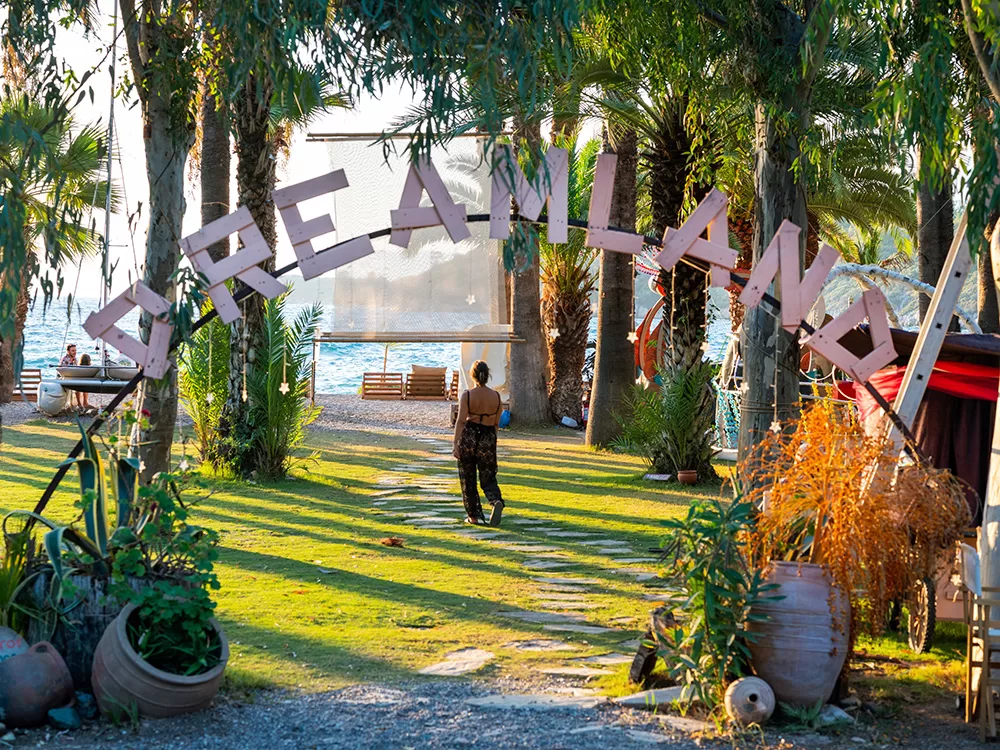
More parties are coming soon. There’s Celestial Dream weekend, Harmony weekend, La Reve weekend, Vogue weekend, Bonjuk Unplugged, and more. Meanwhile, the scientists continue to monitor the cove, trying to untangle whether shark numbers have decreased, and if so, whether the partiers or rising temperatures are more to blame.
Olguner remains unsure, but he does think that due to hotter summers, the local shark season could shift, starting in April instead of May, and ending in October instead of September.
That would track exactly with Bonjuk Bay’s season; their closing party is the last week of October. For now, the bohemians aren’t about to let a little thing like survival spoil their fun. The sharks of Boncuk Bay could not be reached for comment.
———————
Katie Nadworny is an Istanbul-based writer and journalist, mostly working on stories about the environment and culture, with a focus on booze, bees, trees, seeds, and water. Her work has appeared in The Atlantic with support from the Pulitzer Center, as well as National Geographic, The Daily Beast, BBC, and other top outlets. Find more of her work here.
Born next to the Bosphorus, Özge Sebzeci is an Istanbul-based documentary and portrait photographer and National Geographic Explorer focusing on stories about gender, migration, and ecology. Her approach revolves around establishing trust and intimacy with the people she photographs. She is deeply committed to diverse perspectives in visual storytelling. Find more of her work here.
